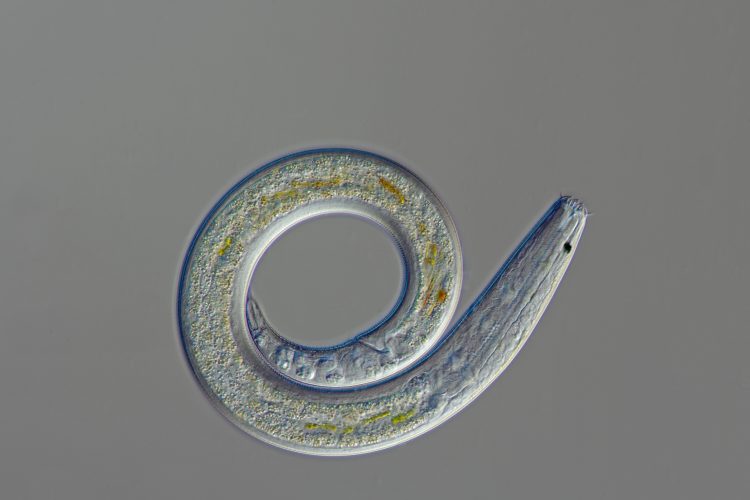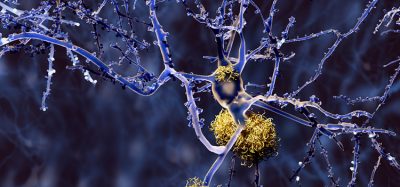Discovering the principles of nervous system function
Posted: 23 November 2023 | Ellen Capon (Drug Target Review) | No comments yet
Dr William Schafer, of the MRC Laboratory of Molecular Biology, focuses on the cellular and molecular mechanisms of behaviour, which is one of the fundamental problems of biology. Schafer and his colleagues have studied the nematode Caenorhabditis elegans, using a variety of approaches such as optogenetic neuroimaging and high content behavioural phenotyping, to discover the principles of nervous system function at molecular and circuit levels.


How does the structure of the neuropeptide network in C. elegans differ from wired connectomes in more complex organisms?
One important difference is that the neuropeptide network is much more decentralised than wired connectomes, both in worms and bigger brains. In wired connectomes there tend to be a small number of hubs that have many more connections than the average neuron, and these play a big role in organising and coordinating the rest of the network. In the neuropeptide network there are lots of neurons that are incredibly well-connected, maybe half of the whole nervous system. This means the neuropeptide network probably uses different strategies to transmit and process information than a more hierarchical wired network does.
What are the key topological features and neurons that play important roles in linking different parts of the neuropeptide network in C. elegans?
Because the network is so decentralised and dense, that makes it easier for different parts of the nervous system to directly communicate, rather than everything going through a few hubs. However, interestingly this communication is still organised—there are communities of neurons that listen to the same groups of input neurons, and those communities communicate with each other in a structured way.
How do neuropeptides in C. elegans function in both the nervous system and other types of tissue as hormones?
Nematodes don’t have a circulatory system (heart and blood vessels) so hormones in C. elegans must travel to neighbouring tissues by diffusion. There is good evidence that some neuropeptides travel between the brain and the digestive system (pharynx and gut), and some neuropeptide receptors are also expressed in muscles. There are also some cells that seem specialised for releasing peptides into the body fluid as hormones. We did not focus on long-range hormonal functions of neuropeptides in our network analysis, but this is something we would like to look at in the future.
What insights can the wireless neuropeptide network in C. elegans provide about the functioning of neural networks in more complex organisms, such as humans?
There is good reason to think that neuropeptide communication in mammalian brains is similar, in its complexity and density, to worms (for example papers from Stephen Smith at the Allen Brain Institute). But it is currently not possible to make a neuropeptide map that covers the whole human or mouse brain at the level of detail we can realise in the worm. We think the patterns we find in the worm neuropeptide network may predict how neuropeptide networks are organised in our brains.
How might the understanding of neuropeptide networks in C. elegans be applied to the development of targeted therapies for neuropsychiatric conditions like eating disorders, OCD, and PTSD?
These are all conditions involving problems with neuropeptide signalling, and a lot of research focuses on particular neuropeptide pathways that affect these behaviours. But like in worms, these human neuropeptides all act within bigger, more complex neuropeptide networks. Therefore, figuring out how networks of neuropeptides work in worms will probably be relevant to understanding the human neuropeptide networks that affect these conditions.
Are the principles governing the organisation of neuropeptide networks in C. elegans applicable to larger brains, including those of fish, octopuses, mice, and humans, and if so, what implications does this have for neuroscience and potential treatments for neurological conditions?
We don’t know for sure, but previous work has shown that wired (synaptic) networks in worms show similar patterns to wired networks in big brains, so we think the chance is quite good that principles of neuropeptide network organisation will also apply to both big and small nervous systems. If so, the concepts we develop in simpler animals should help us understand the more complex systems in the human brain and make good hypotheses about how brain diseases arise and can be treated.
About the author


Group Leader at MRC Laboratory of Molecular Biology
William Schafer is a neuroscientist who has investigated conserved principles by which neurons and neural circuits control behaviour. By studying nematode worms with simple and well-characterised nervous systems, he has addressed basic questions in neurobiology, including how sensory neurons detect environmental stimuli, how neuromodulators control behavioural states, and how patterns of neuronal wiring relate to brain function. In the course of this work he has also introduced new methods for detecting and recording the activities of neurons in living animals and for quantitatively defining the effects of genetic mutations on behaviour; these approaches have become widely applied throughout neuroscience.
He obtained his PhD in Biochemistry from the University of California, Berkeley and began work on nematode neurobiology as a postdoctoral researcher at UCSF. He was a faculty member in the Biology Division at UCSD before moving to the MRC Laboratory of Molecular Biology in Cambridge, UK, in 2006, where he is currently a Group Leader. He is also a Professor of Biology at the University of Leuven, a member of EMBO and a Fellow of the Academy of Medical Sciences.
Related topics
Neurosciences
Related conditions
brain diseases, Eating disorders, obsessive-compulsive disorder (OCD), Post-traumatic stress disorder (PTSD)
Related organisations
MRC Laboratory of Molecular Biology
Related people
Dr William Schafer (MRC Laboratory of Molecular Biology)







